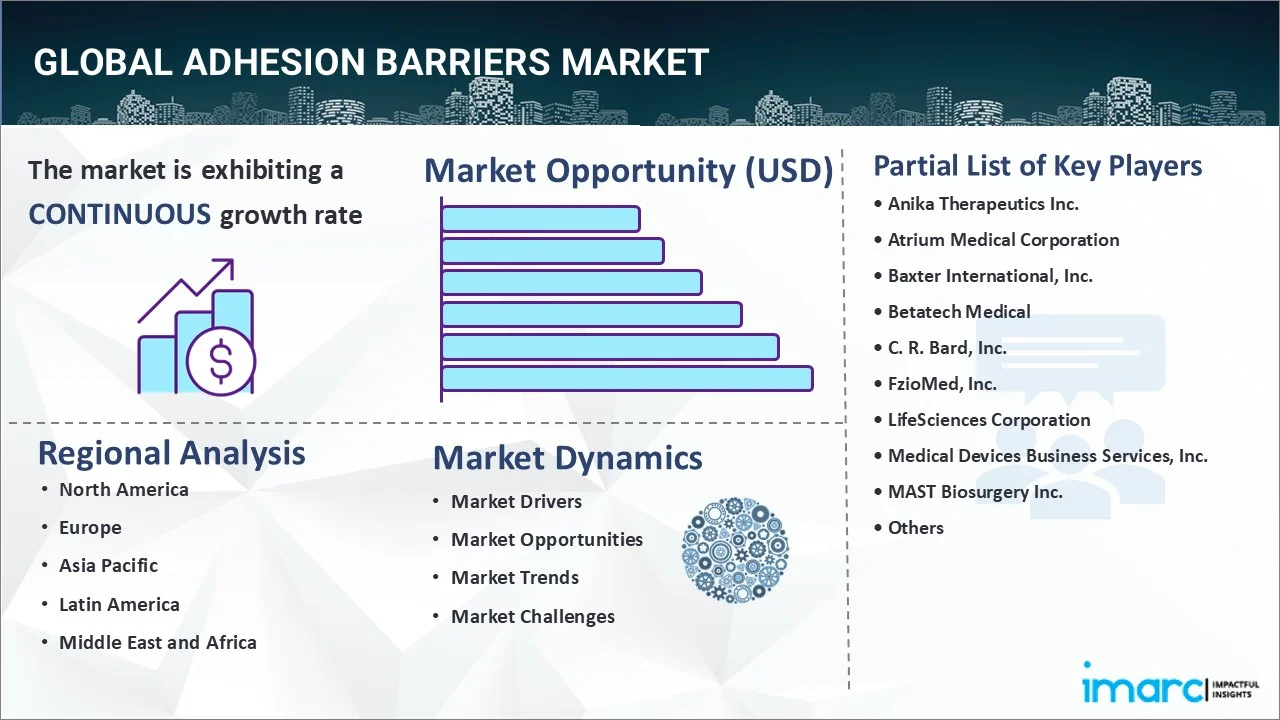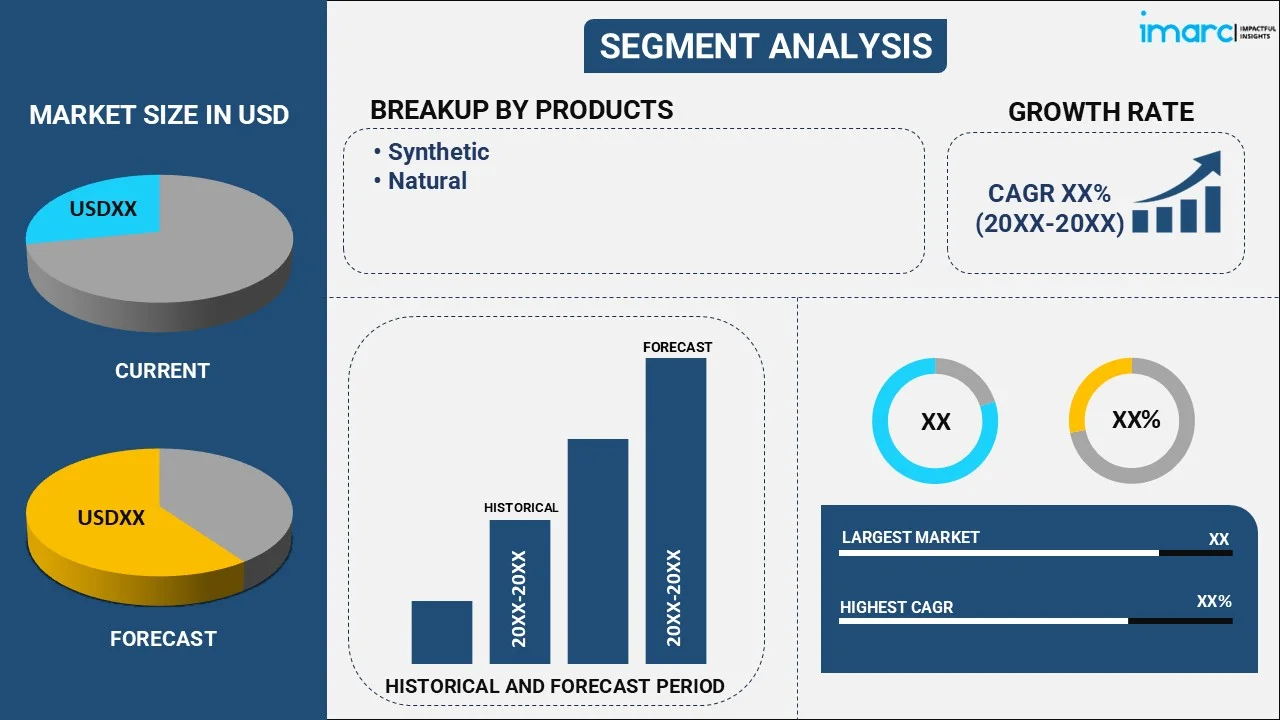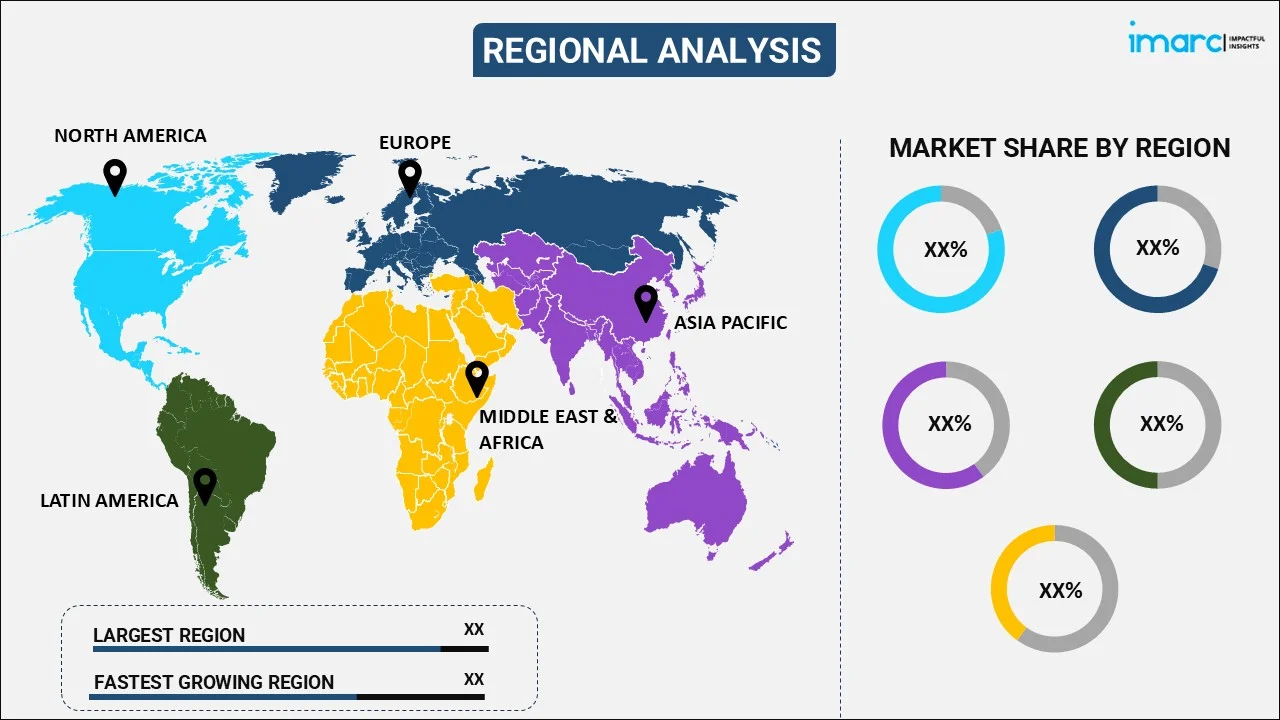
Adhesion Barriers Market Report by Product (Synthetic, Natural), Formulation (Film, Liquid, Gel), Application (Gynecological Surgeries, General/Abdominal Surgeries, Cardiovascular Surgeries, Orthopedic Surgeries, Neurological Surgeries, Reconstructive Surgeries, Urological Surgeries, and Others), and Region 2025-2033
Global Adhesion Barriers Market:
The global adhesion barriers market size reached USD 1,112.7 Million in 2024. Looking forward, IMARC Group expects the market to reach USD 1,903.2 Million by 2033, exhibiting a growth rate (CAGR) of 5.84% during 2025-2033. The increasing applications of these film-based medical implants in cardiovascular, reconstructive, and urological surgeries are bolstering the market.
|
Report Attribute
|
Key Statistics
|
|---|---|
|
Base Year
|
2024
|
|
Forecast Years
|
2025-2033
|
|
Historical Years
|
2019-2024
|
| Market Size in 2024 | USD 1,112.7 Million |
| Market Forecast in 2033 | USD 1,903.2 Million |
| Market Growth Rate (2025-2033) | 5.84% |
Adhesion Barriers Market Analysis:
- Major Market Drivers: The rising demand for postoperative procedures is one of the key factors catalyzing the market.
- Key Market Trends: The growing cases of sports-related injuries are acting as significant growth-inducing factors. Besides this, the increasing need for spray-type films that are more convenient and effective to use during laparoscopic systems is also contributing to the market.
- Competitive Landscape: Some of the prominent companies in the global market include Anika Therapeutics, Inc., Atrium Medical Corporation, Baxter International, Inc., Betatech Medical, C. R. Bard, Inc., FzioMed, Inc., LifeSciences Corporation, Medical Devices Business Services, Inc., MAST Biosurgery Inc., and Groupe Sanofi, among many others.
- Geographical Trends: The inflating healthcare expenditures of individuals are stimulating the market in North America.
- Challenges and Opportunities: The variability in efficacy is hampering the market. However, robust clinical evidence is expected to fuel the market in the coming years.

Adhesion Barriers Market Trends:
Growing Surgical Procedures
The increasing incidence of conditions requiring surgery, such as gynecological, cardiovascular, and orthopedic disorders, is catalyzing the market. Moreover, the inflating need for reducing the formation of scar tissue that can lead to pain, complications, and additional surgeries is also acting as another significant growth-inducing factor. For example, in April 2024, FzioMed, Inc. showcased its innovative Oxiplex adhesion barrier gel product portfolio designed to minimize the formation of post-surgical adhesions following laparoscopic and hysteroscopic surgery at Hysteroscopy, Assisted Reproductive Technology, and Ultrasound (HARTUS) congress in Rome, Italy. This is escalating the adhesion barriers market demand.
Increasing Technological Advancements
The rising adoption of biologics, along with the improvements in bioresorbable materials, are stimulating the market. They offer reduced inflammatory responses, better tissue compatibility, and easier application during surgical procedures. For instance, in February 2024, scientists at the Wyss Institute for Biologically Inspired Engineering at Harvard created a versatile and simple method to effectively bond layers made of the same or different types of hydrogels and other polymeric materials using a thin film of chitosan, which is expanding adhesion barriers market share.
Rising Novel Medical Treatment
The inflating healthcare expenditure capacities are strengthening the market. Apart from this, the increasing focus on providing better access to healthcare services is further providing a positive outlook to the market. For example, in May 2024, three projects from Radboud University Medical Center received funding from the BeNeFIT program, a collaboration between ZonMW and KCE. All three projects involve major clinical studies conducted in several hospitals across Belgium and the Netherlands. These studies focus on psychiatry, surgery, and intensive care.
Global Adhesion Barriers Industry Segmentation:
IMARC Group provides an analysis of the key trends in each segment of the market, along with the adhesion barriers market forecast at the global, regional, and country levels for 2025-2033. Our report has categorized the market based on the product, formulation, and application.
Breakup by Product:

- Synthetic
- Natural
Synthetic dominates the market
The report has provided a detailed breakup and analysis of the market based on the product. This includes synthetic and natural. According to the report, synthetic represented the largest market segmentation.
Synthetic adhesion barriers represent engineered materials that prevent post-surgical adhesions. One such example is REPEL-CV, a bioresorbable adhesion barrier designed for utilization in cardiovascular surgeries, which is increasing the adhesion barriers market outlook.
Breakup by Formulation:
- Film
- Liquid
- Gel
The film holds the majority of the global adhesion barriers market revenue
The report has provided a detailed breakup and analysis of the market based on the formulation. This includes film, liquid, and gel. According to the report, the film represented the largest market segmentation.
Film adhesion barriers are aimed at improving efficacy and patient outcomes. A significant launch is the GYNECARE INTERCEED absorbable adhesion barrier.
Breakup by Application:
- Gynecological Surgeries
- General/Abdominal Surgeries
- Cardiovascular Surgeries
- Orthopedic Surgeries
- Neurological Surgeries
- Reconstructive Surgeries
- Urological Surgeries
- Others
Gynecological surgeries dominate the adhesion barriers market statistics
The report has provided a detailed breakup and analysis of the market based on the application. This includes gynecological surgeries, general/abdominal surgeries, cardiovascular surgeries, orthopedic surgeries, neurological surgeries, reconstructive surgeries, urological surgeries, and others. According to the report, gynecological surgeries represented the largest market segmentation.
The rising focus on preventing the formation of adhesions that can lead to complications is driving the segment's growth. PREVADH® absorbable adhesion barrier introduced by FzioMed is gaining extensive traction, as it is easy to handle.
Breakup by Region:

- North America
- United States
- Canada
- Asia Pacific
- China
- Japan
- India
- South Korea
- Australia
- Indonesia
- Others
- Europe
- Germany
- France
- United Kingdom
- Italy
- Spain
- Russia
- Others
- Latin America
- Brazil
- Mexico
- Others
- Middle East and Africa
North America exhibits a clear dominance in the market
The market research report has also provided a comprehensive analysis of all the major regional markets, which include North America (the United States and Canada); Asia Pacific (China, Japan, India, South Korea, Australia, Indonesia, and others); Europe (Germany, France, the United Kingdom, Italy, Spain, Russia, and others); Latin America (Brazil, Mexico, and others); and the Middle East and Africa. According to the report, North America accounted for the largest market share.
As per the adhesion barriers market overview, the widespread surgical procedures are acting as significant growth-inducing factors. For example, the REPEL-CV adhesion barrier by SyntheMed is specifically designed for cardiovascular surgeries.
Competitive Landscape:
The market research report has provided a comprehensive analysis of the competitive landscape. Detailed profiles of all major adhesion barriers market companies have also been provided. Some of the key players in the market include:
- Anika Therapeutics, Inc.
- Atrium Medical Corporation
- Baxter International, Inc.
- Betatech Medical
- C. R. Bard, Inc.
- FzioMed, Inc.
- LifeSciences Corporation
- Medical Devices Business Services, Inc.
- MAST Biosurgery Inc.
- Groupe Sanofi
(Please note that this is only a partial list of the key players, and the complete list is provided in the report.)
Adhesion Barriers Market Recent Developments:
- May 2024: Three projects involving on psychiatry, surgery, and intensive care from Radboud University Medical Center received funding from the BeNeFIT program, a collaboration between ZonMW and KCE.
- April 2024: FzioMed, Inc. showcased its innovative Oxiplex adhesion barrier gel product portfolio designed to minimize the formation of post-surgical adhesions at the Hysteroscopy, Assisted Reproductive Technology, and Ultrasound (HARTUS) congress in Rome, Italy.
- February 2024: Scientists at the Wyss Institute for Biologically Inspired Engineering at Harvard created a versatile and simple method to effectively bond layers made of the same or different types of hydrogels and other polymeric materials using a thin film of chitosan.
Adhesion Barriers Market Report Scope:
| Report Features | Details |
|---|---|
| Base Year of the Analysis | 2024 |
| Historical Period | 2019-2024 |
| Forecast Period | 2025-2033 |
| Units | Million USD |
| Scope of the Report | Exploration of Historical Trends and Market Outlook, Industry Catalysts and Challenges, Segment-Wise Historical and Predictive Market Assessment:
|
| Products Covered | Synthetic, Natural |
| Formulations Covered | Film, Liquid, Gel |
| Applications Covered | Gynecological Surgeries, General/Abdominal Surgeries, Cardiovascular Surgeries, Orthopedic Surgeries, Neurological Surgeries, Reconstructive Surgeries, Urological Surgeries, Others |
| Regions Covered | Asia Pacific, Europe, North America, Latin America, Middle East and Africa |
| Countries Covered | United States, Canada, Germany, France, United Kingdom, Italy, Spain, Russia, China, Japan, India, South Korea, Australia, Indonesia, Brazil, Mexico |
| Companies Covered | Anika Therapeutics, Inc., Atrium Medical Corporation, Baxter International, Inc., Betatech Medical, C. R. Bard, Inc., FzioMed, Inc., LifeSciences Corporation, Medical Devices Business Services, Inc., MAST Biosurgery Inc., Groupe Sanofi, etc. |
| Customization Scope | 10% Free Customization |
| Post-Sale Analyst Support | 10-12 Weeks |
| Delivery Format | PDF and Excel through Email (We can also provide the editable version of the report in PPT/Word format on special request) |
Key Benefits for Stakeholders:
- IMARC's industry report offers a comprehensive quantitative analysis of various market segments, historical and current market trends, market forecasts, and dynamics of the adhesion barriers market from 2019-2033.
- The research report provides the latest information on the market drivers, challenges, and opportunities in the global adhesion barriers market.
- The study maps the leading, as well as the fastest-growing, regional markets. It further enables stakeholders to identify the key country-level markets within each region.
- Porter's five forces analysis assists stakeholders in assessing the impact of new entrants, competitive rivalry, supplier power, buyer power, and the threat of substitution. It helps stakeholders to analyze the level of competition within the adhesion barriers industry and its attractiveness.
- The competitive landscape allows stakeholders to understand their competitive environment and provides insight into the current positions of key players in the market.
Key Questions Answered in This Report
The global adhesion barriers market was valued at USD 1,112.7 Million in 2024.
We expect the global adhesion barriers market to exhibit a CAGR of 5.84% during 2025-2033.
The rising healthcare expenditures, along with the growing demand for adhesion barriers in preventing high risk of postoperative complications, are primarily driving the global adhesion barriers market growth.
The sudden outbreak of the COVID-19 pandemic had led to the postponement of numerous elective surgeries, such as gynecological, general, cardiovascular, etc., to reduce the risk of the coronavirus infection upon hospital visits, thereby limiting the demand for adhesion barriers.
Based on the product, the global adhesion barriers market can be segmented into synthetic and natural. Currently, synthetic adhesion barriers hold the majority of the total market share.
Based on the formulation, the global adhesion barriers market has been divided into film, liquid, and gel. Among these, film formulation currently exhibits a clear dominance in the market.
Based on the application, the global adhesion barriers market can be categorized into gynecological surgeries, general/abdominal surgeries, cardiovascular surgeries, orthopedic surgeries, neurological surgeries, reconstructive surgeries, urological surgeries, and others. Currently, gynecological surgeries account for the largest market share.
On a regional level, the market has been classified into North America, Asia Pacific, Europe, Latin America, and Middle East and Africa, where North America currently dominates the global market.
Some of the major players in the global adhesion barriers market include Anika Therapeutics, Inc., Atrium Medical Corporation, Baxter International, Inc., Betatech Medical, C. R. Bard, Inc., FzioMed, Inc., LifeSciences Corporation, Medical Devices Business Services, Inc., MAST Biosurgery Inc., Groupe Sanofi, etc.
Need more help?
- Speak to our experienced analysts for insights on the current market scenarios.
- Include additional segments and countries to customize the report as per your requirement.
- Gain an unparalleled competitive advantage in your domain by understanding how to utilize the report and positively impacting your operations and revenue.
- For further assistance, please connect with our analysts.
 Request Customization
Request Customization
 Speak to an Analyst
Speak to an Analyst
 Request Brochure
Request Brochure
 Inquire Before Buying
Inquire Before Buying




.webp)




.webp)












